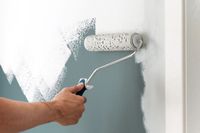
DIY Pressure Washing Tips and Considerations for Homeowners
Pressure washing is a highly effective way to clean your home’s exterior, driveway, patio, and other surfaces, removing dirt, grime, mold, and mildew. Doing it yourself can save money and give you the satisfaction of a job well done. However, it's important to know that pressure washing can be hard work and may not always yield the desired results, especially if you're using a lower-end machine. Here are some essential tips and considerations for DIY pressure washing, including the option to pick up a washer from budget-friendly stores like Lidl or Aldi.
Choosing the Right Pressure Washer Selecting the right pressure washer is crucial for effective cleaning. Pressure washers come in various power levels, measured in pounds per square inch (PSI) and gallons per minute (GPM). For most home projects, a washer with 1,300 to 2,400 PSI and a flow rate of 1.5 to 2 GPM is sufficient. While high-end models can be expensive, budget-friendly options are available at stores like Lidl and Aldi. These machines can be a good starting point for small jobs, but keep in mind that they may lack the power and durability of professional-grade equipment, which could make the task more labor-intensive and less effective.
Safety First Pressure washers are powerful tools that can cause injury if not used properly. Always wear protective gear, including safety glasses, gloves, and sturdy footwear. Be cautious of the high-pressure spray, which can damage surfaces or cause harm. Never point the nozzle at people, animals, or delicate objects. Ensure you understand the washer's operating instructions and follow all safety guidelines provided by the manufacturer.
Preparing the Surface Before you begin pressure washing, prepare the surface to ensure optimal results. Remove any loose debris, such as leaves, dirt, and sticks, from the area you plan to clean. For stubborn stains or mold, consider applying a cleaning solution specifically designed for pressure washers. Allow the solution to sit for a few minutes to break down the grime, but avoid letting it dry completely. Test a small, inconspicuous area first to ensure the solution won’t damage the surface.
Proper Pressure Washing Technique Using the correct technique is essential for effective pressure washing. Start by attaching the appropriate nozzle to your pressure washer. Nozzles with a wider spray pattern (such as 25 or 40 degrees) are ideal for general cleaning, while narrower patterns (0 or 15 degrees) provide more concentrated power for tough stains. Begin washing from a safe distance, gradually moving closer to the surface until you find the optimal cleaning range. Hold the nozzle at a consistent angle and sweep it back and forth, overlapping each stroke to avoid streaks. Keep the nozzle moving to prevent surface damage, and maintain a safe distance from delicate areas like windows and siding.
Post-Cleaning Maintenance After completing your pressure washing project, take time to clean and maintain your equipment. Rinse the detergent tank thoroughly to remove any residual cleaning solution. Disconnect the hose and drain any remaining water to prevent damage from freezing. Inspect the nozzle and other attachments for wear and tear, replacing any damaged parts as needed. Proper maintenance will extend the life of your pressure washer and ensure it’s ready for future use.
DIY pressure washing can be a rewarding project that revitalizes your home’s exterior, but it's important to be prepared for the hard work involved. Budget-friendly pressure washers from stores like Lidl and Aldi offer an accessible entry point, though they may not always deliver professional-level results. By choosing the right equipment, following safety precautions, preparing the surface, and using proper techniques, you can achieve a cleaner, more attractive home. Remember to maintain your equipment to keep it in good working order for future projects. With these tips, you'll be well-equipped to tackle pressure washing tasks and enjoy the satisfaction of a job well done.



